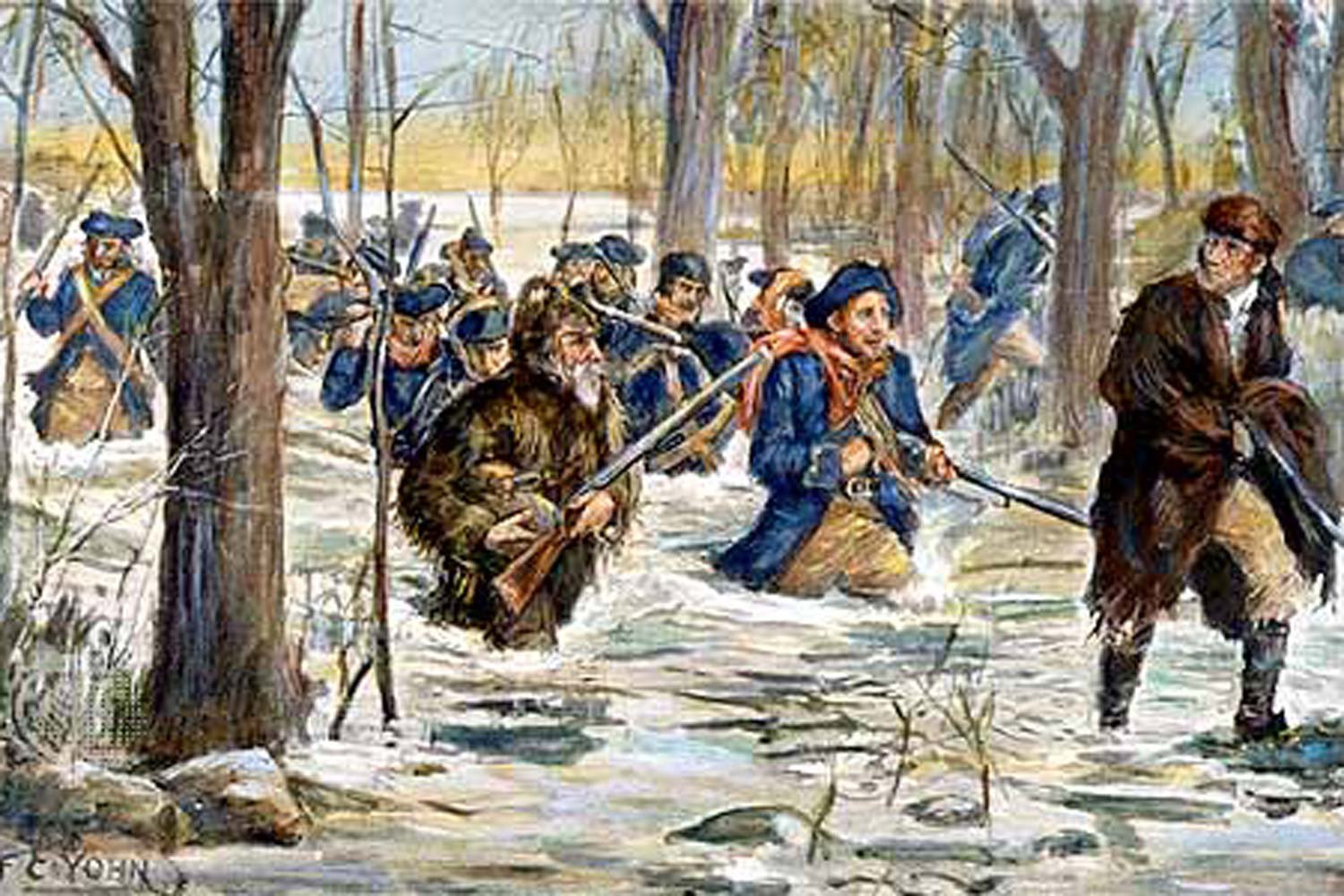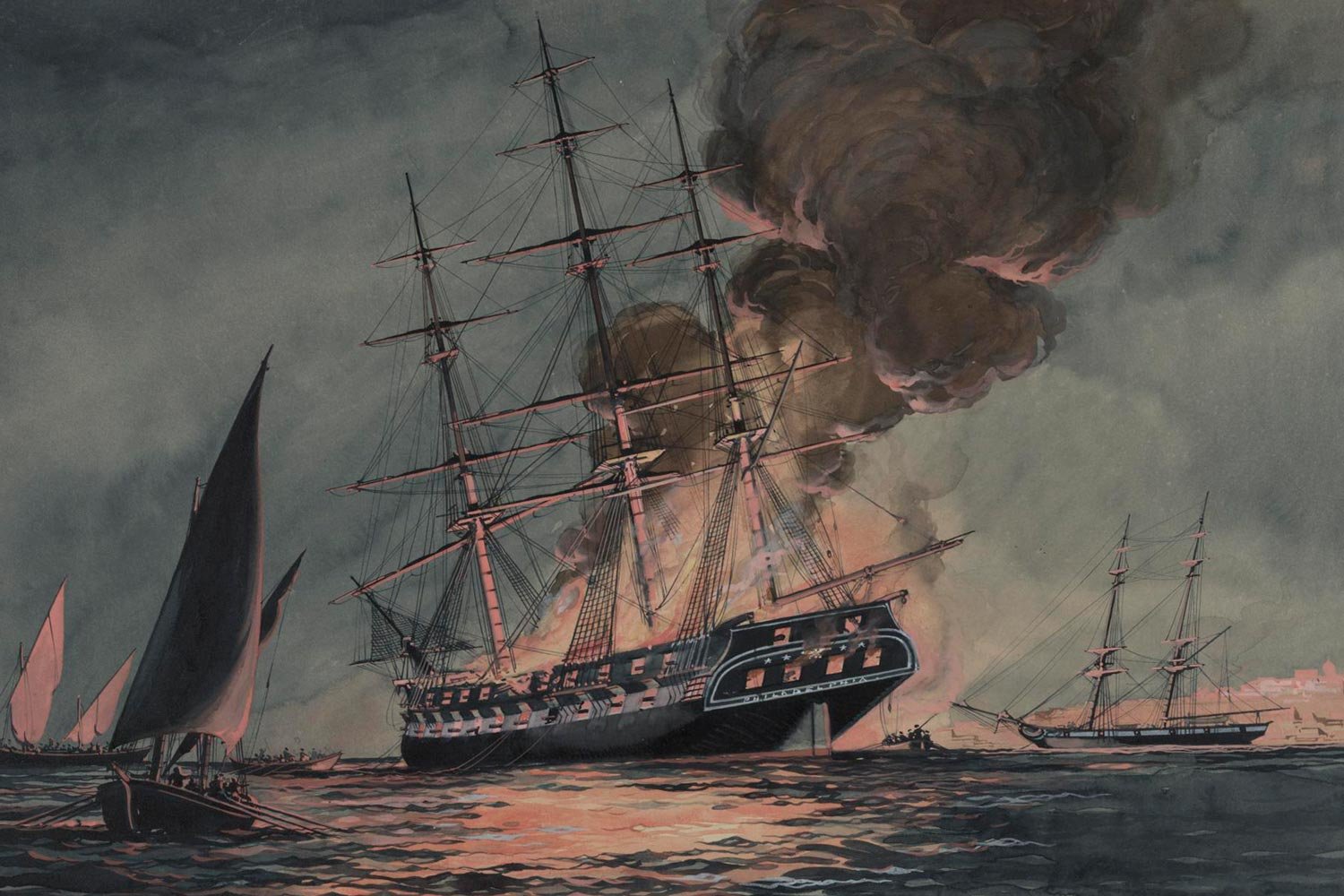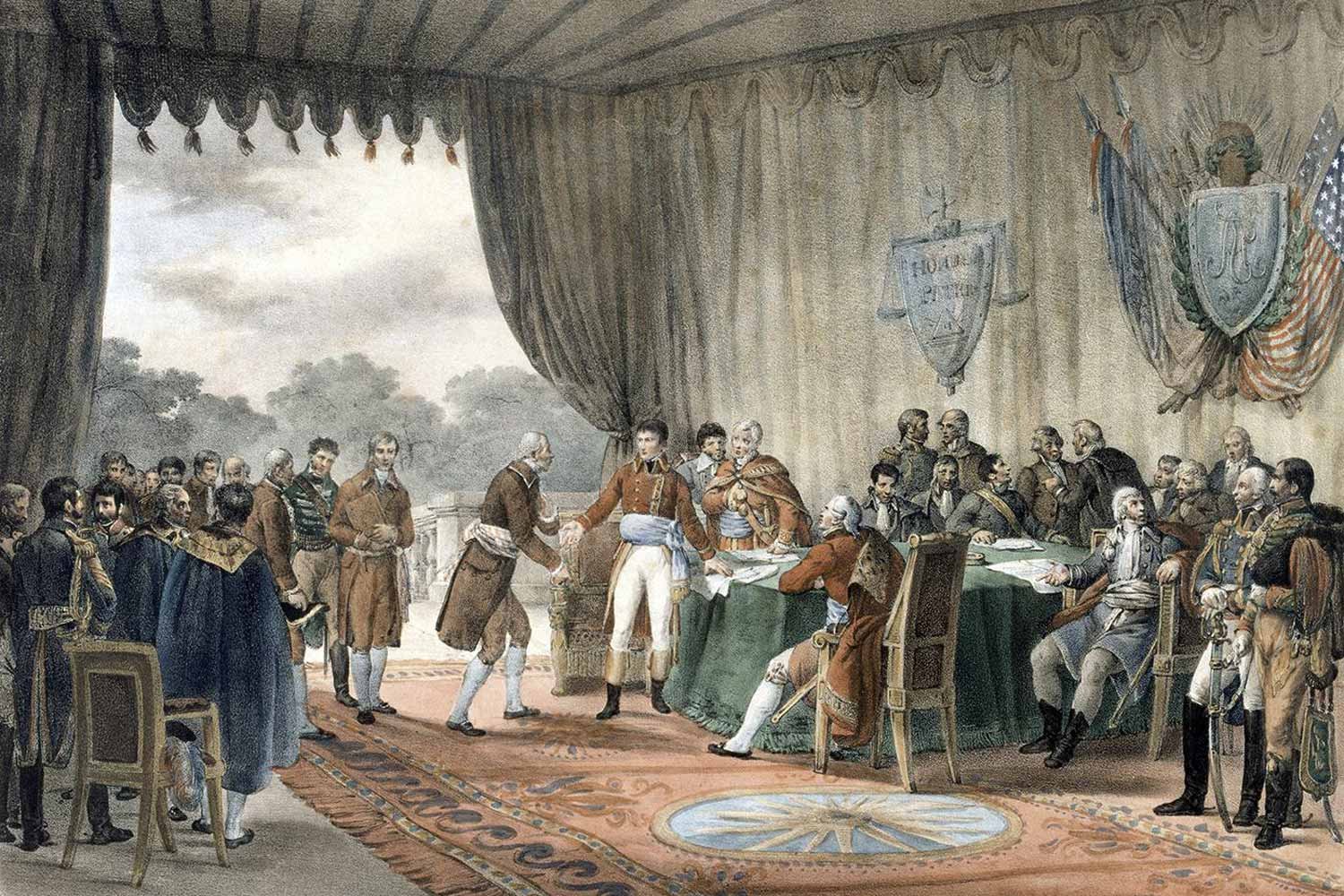Clark’s Intrepid Winter March to Vincennes
Following the British retaking of Fort Sackville on December 17, 1778, Lieutenant Colonel George Rogers Clark’s plan to conquer the Illinois Country for the United States was in peril. Without this strategic location in American control, his invasion of the southwestern portion of the Province of Quebec would be for naught, and continued incursions into Kentucky by Britain’s Indian allies would continue unabated. With this in mind, Clark formed a plan to lead his men on a march to the east and capture the fort once and for all.
The task in front of Clark and his courageous band was formidable to say the least. To reach their destination, they would have to cross almost two hundred miles of roadless terrain which Clark dubbed the “drowned country” because the ground they traversed was spongy from rivers and streams overflowing their banks.
Moreover, these rivers, which were useful highways when traveling north to south, were huge impediments, fast flowing and choked with ice, for anyone traveling east from Kaskaskia. And they had no boats, carrying them along was simply not an option, so crossing streams would require wading across fords through bone chilling water and then continuing their winter journey in wet clothes and boots. Then, if they reached Vincennes, they would have to assault a potentially superior force possessing artillery and secure behind palisaded walls.
The indomitable Clark did not allow these challenges to turn him from his mission. On the eve of his departure, Clark wrote to Virginia Governor Patrick Henry, “I am resolved to take advantage of the present situation and risk the whole on a single battle…I know the case is desperate, but Sir, we must either quit the country or attack Mr. Hamilton. No time is to be lost.”
Clark continued, “Great things have been effected by a few men well conducted. Perhaps we may be fortunate. We have this consolation, that our cause is just and that our country will be grateful and not condemn our conduct in case we fail.”
Recognizing the need for artillery to batter down the walls of Fort Sackville and knowing cannons could not be hauled overland, Clark purchased an old keelboat and converted it into an armed gunboat which he named the Willing. He gave command of the vessel to his cousin Captain John Rogers and assigned forty-six men to be his crew. Rogers’ task was to float down the Mississippi from Kaskaskia and then pole upriver on the Ohio and then the Wabash and meet Clark’s army as they emerged at the banks of the Wabash. That the timing would work out was a long shot in a long shot mission.
On February 5, 1779, Clark and 120 men, with the town folk of Kaskaskia seeing them off, began their trek to Vincennes. Almost immediately, the men hit marshy ground and it rained practically every day. After twelve days on the march, Clark reached the Little Wabash River, drowned under four feet of floodwaters. Clark had the men construct a dugout canoe from a large tree and cross by ferrying men and provisions, one load at a time. The crossing took all day, and they only made three miles.
The next day, February 17, was even worse as most of the men spent fourteen hours sloshing through 40 degree water, at times up to their necks. To compound matters, the last of their provisions were lost when the lone remaining pack horse succumbed and was swept downriver.
Not all men were made of the same fabric, and the strong began to carry the heavy rifles of the weak. By this point, it was either to reach Vincennes or die of starvation. It is impossible to relate to the suffering of these men, both mental and physical, lying on wet ground in wet clothes every night with neither fire nor food, and temperatures near freezing.
Clark sent the dugout canoe downriver to locate Captain Rogers and his armed galley and hasten their arrival, but there was no sign of them. After waiting and resting for two days, Clark could no longer wait. (Rogers would finally arrive three days after the fort was assaulted). On the 21st, Clark and his men crossed the Wabash, ferrying the men across in canoes to a piece of dry ground. The men went to bed that night on empty stomachs and they awoke with their clothes frozen to their bodies.
As dawn broke, the next stretch of dry land could be seen, three miles away, across a flooded plain. Although hungry and tired, Clark simply would not quit. He gave the men a pep talk and concluded it by being the first man to jump on and break through the ice that had formed the previous night, and began the unimaginably frigid slosh to the next piece of high ground. Clark, who was not one to complain, stated “This was the most trying of all the difficulties we experienced.”
Here they finally found dry wood and some natives provided a half buffalo carcass, not much meat for 120 men, but they enjoyed a warm fire and a small morsel for the first time in days. The worst was now behind them. All that remained was to storm the fort without artillery and capture a garrison that outnumbered them, no easy task.
Courage takes many forms, one of which is simply enduring the seemingly unendurable. Clark and these heroic Americans did just that with their trek to Vincennes.
Next week, we will discuss the capture of Fort Sackville. Until then, may your motto be “Ducit Amor Patriae,” love of country leads me.











Commodore Edward Preble assembled his considerable American fleet just outside Tripoli harbor in August 1804, determined to punish the city and its corsairs, and force Yusuf Karamanli, the Dey of Tripoli, to sue for peace.